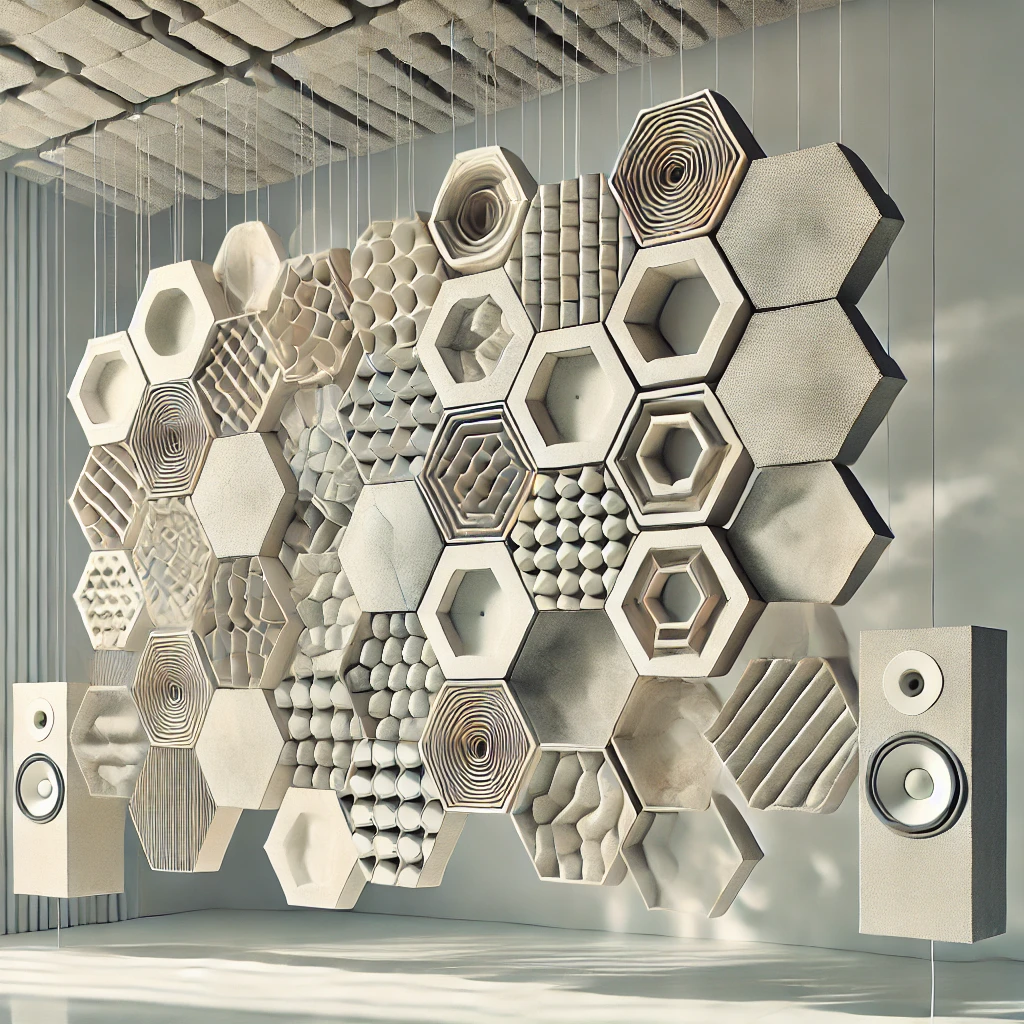
Why Make a DIY Sound Baffle?
Sound baffles are effective at reducing noise and echo in a room by absorbing sound waves, making spaces more comfortable for conversation, music, and general activities. By using upcycled materials like quilled paper, cloth, string, and cardboard, you can create a functional and beautiful baffle that also supports sustainability. This project is ideal for improving sound quality in home studios, libraries, meeting rooms, or any space where noise reduction is beneficial.
Materials Needed:
- Quilled paper: Use paper strips rolled into coils for texture and sound absorption.
- Upcycled cloth: Old t-shirts, towels, or fabric scraps to wrap and cover the structure.
- Cardboard: A sturdy base to build the baffle upon.
- String or fishing line: For suspending the baffle from the ceiling.
- Glue or adhesive: To attach the quilled paper and cloth to the cardboard.
- Scissors or craft knife: For cutting materials.
- Needle (optional): For threading string through the baffle.
Step-by-Step Guide:
-
Prepare the Cardboard Base:
- Cut a piece of cardboard into the desired shape (e.g., rectangular, hexagonal, or circular).
- You can stack multiple layers of cardboard together for a more rigid structure.
-
Create the Quilled Paper Sections:
- Cut strips of paper (1/4 inch to 1 inch wide).
- Roll the strips into tight coils or other shapes, such as teardrops or scrolls.
- Secure the quilled shapes with glue to prevent them from unraveling.
-
Attach the Quilled Paper to the Cardboard:
- Glue the quilled paper pieces onto the cardboard base, covering as much surface area as possible.
- Arrange the quilled shapes in a dense pattern to maximize surface texture and sound absorption.
-
Wrap the Edges in Upcycled Cloth:
- Use cloth to wrap around the edges of the cardboard to cover any exposed areas.
- Secure the cloth with glue, staples, or sewing as needed.
- You can also add an additional layer of cloth behind the baffle for a more finished look.
-
Assemble Hanging Supports:
- Poke small holes near the corners of the cardboard base.
- Thread string or fishing line through the holes and tie knots to secure the baffle for hanging.
- Adjust the string lengths to ensure the baffle will hang evenly from the ceiling.
-
Hang the Sound Baffle:
- Locate a suitable place on the ceiling to hang the baffle.
- Use ceiling hooks or other fixtures to suspend the baffle, ensuring it hangs securely and at an optimal height for sound absorption (typically 12-24 inches from the ceiling).
Tips for Effectiveness:
- Placement: Install multiple baffles throughout the room for maximum sound absorption, especially above areas with the most noise.
- Layering: Create multiple layers of quilled paper and cloth for enhanced sound-dampening properties.
- Pattern Design: Consider designing patterns with the quilled paper to make the baffle visually appealing as a piece of functional art.
By combining upcycled materials with creative craftsmanship, you can produce an eco-friendly sound baffle that enhances both the acoustics and aesthetics of your space.